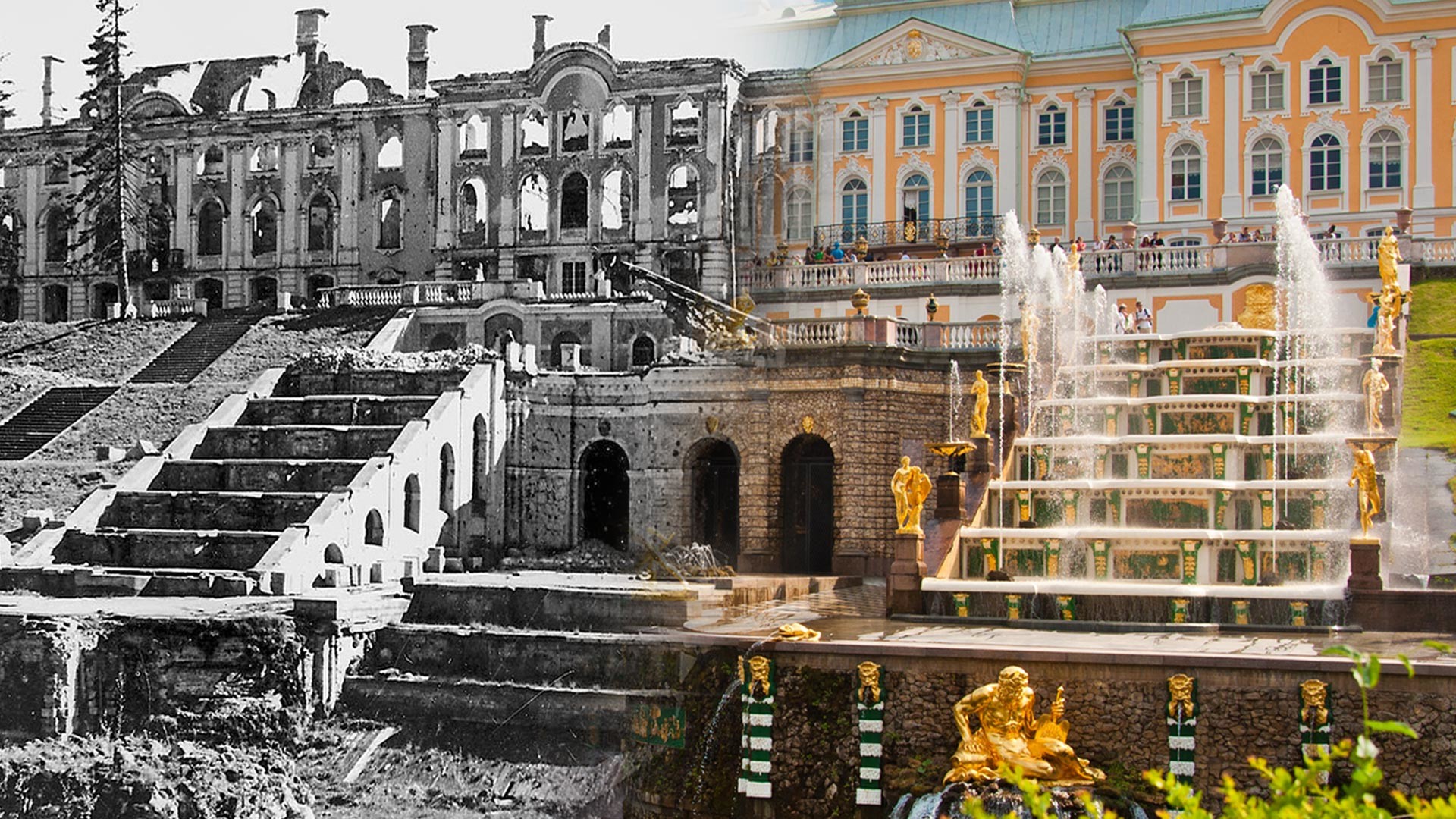
Peterhof in 1944, and now
Peterhof State Museum-Reserve/ Legion MediaThe royal residence in Peterhof is perhaps the most splendid of the famous palaces built in the environs of St. Petersburg. Peter the Great began building it in 1715 and wanted it to surpass Versailles in beauty and luxury. After World War II, however, very little was left of Peterhof. On September 23, 1941, it was occupied by the Germans. For two months, the Soviet army tried to recapture it, but in vain. Peterhof remained under constant bombardment until the Siege of Leningrad was lifted in January 1944.
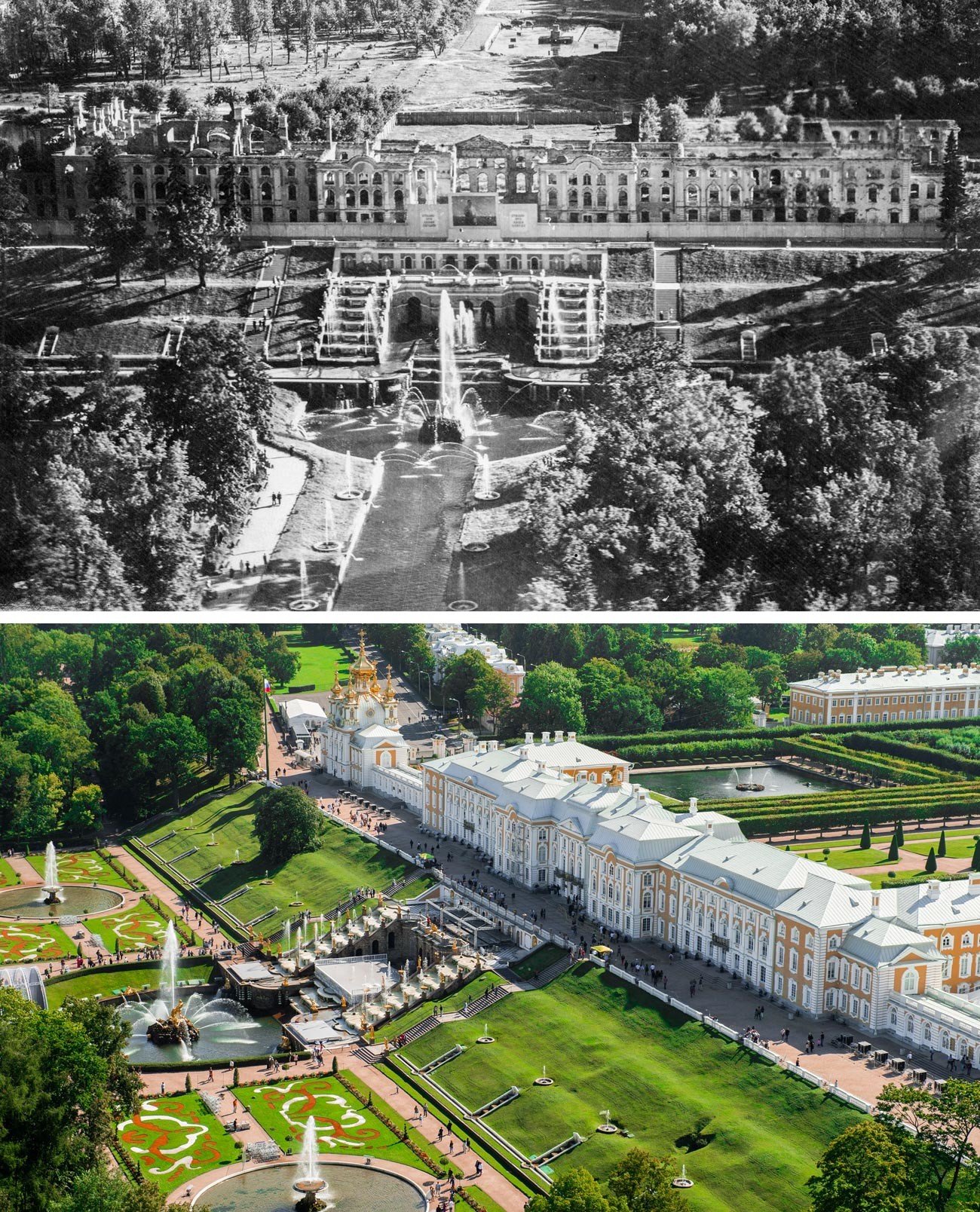
View of the Upper Garden, the Grand Palace and the Grand Cascade fountain in 1944 and now
Peterhof State Museum-Reserve; ReutersThe greatest damage was done to the Grand Palace – it was hit by numerous bombs and basically reduced to rubble.
Much damage was also done to the beautiful park and fountains - sculptures that weren’t evacuated or hidden were destroyed by bombs and shelling. The Germans also burned most trees in the park. Furthermore, before retreating they mined all the grounds.
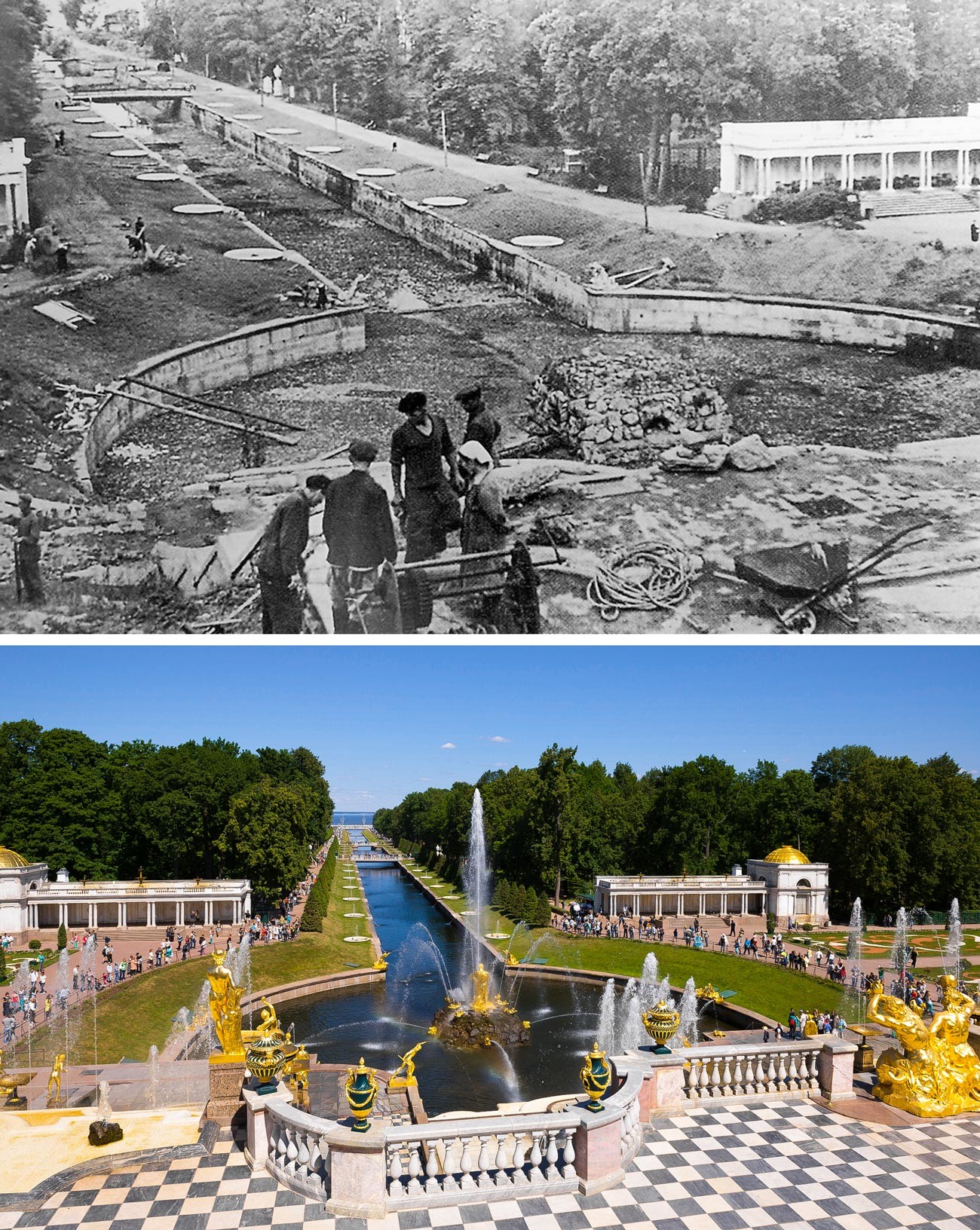
The Grand Cascade fountain in 1946 and now
pastvu.com; Legion mediaThe gardens began to be restored in the spring after the siege was lifted, and by the summer of 1945 they were opened to visitors.
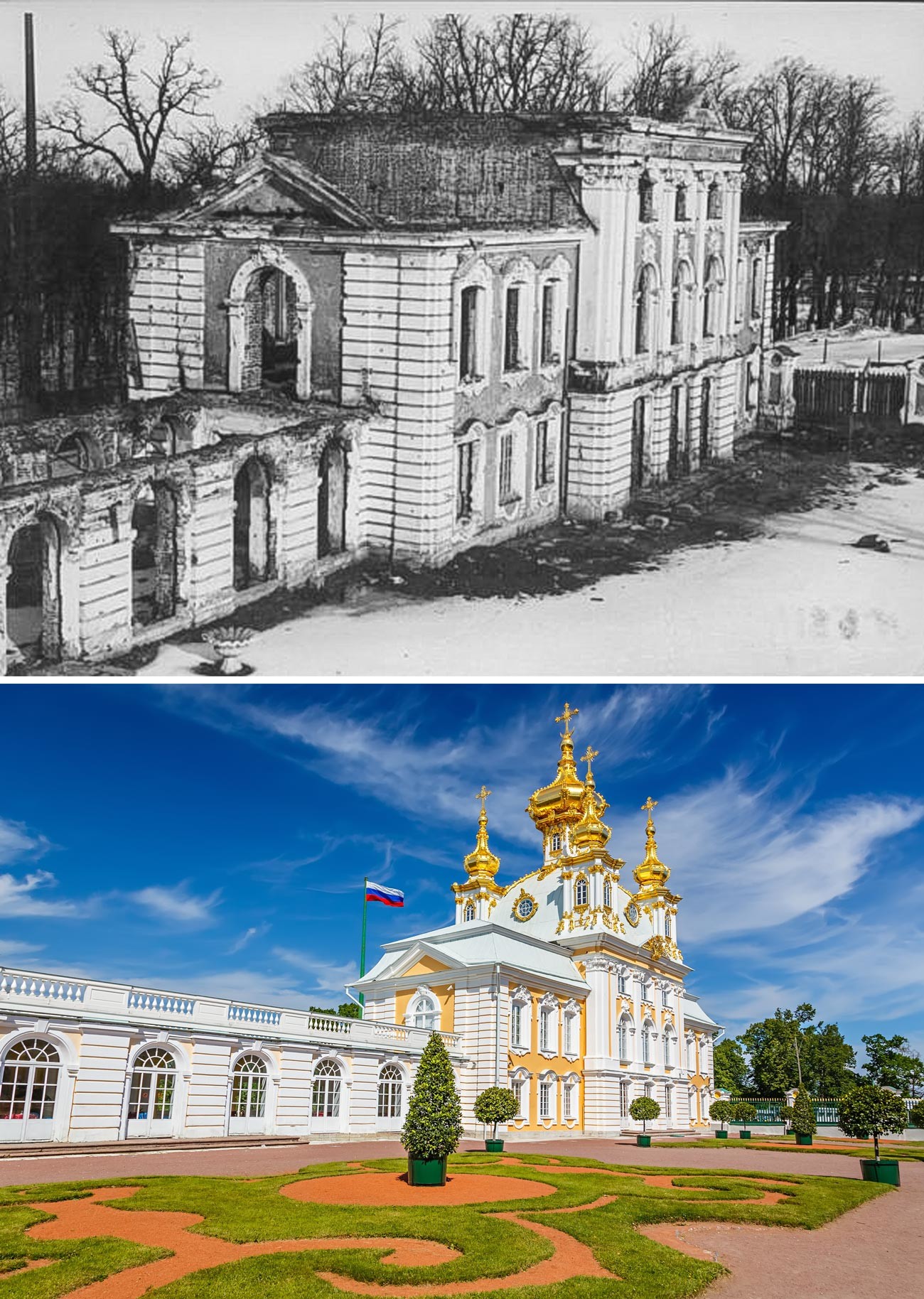
The Court Church (now the Royal Church Museum)
Peterhof State Museum-Reserve; Legion MediaHowever, the fountains were restored to working order only in the late 1950s. One of them - the Lion Cascade – was reopened only in 2000.
This palace and park south of St. Petersburg was a summer residence of the tsars. Its construction began under Catherine I, the wife of Peter the Great, but only during the reign of the emperor’s daughter, Elizabeth, was the palace developed to its definitive baroque look.
This royal residence suffered no less than Peterhof during the war. Museum employee Vera Lemus recalled how staff were still hiding valuable exhibits as they heard the shots of the approaching German troops.
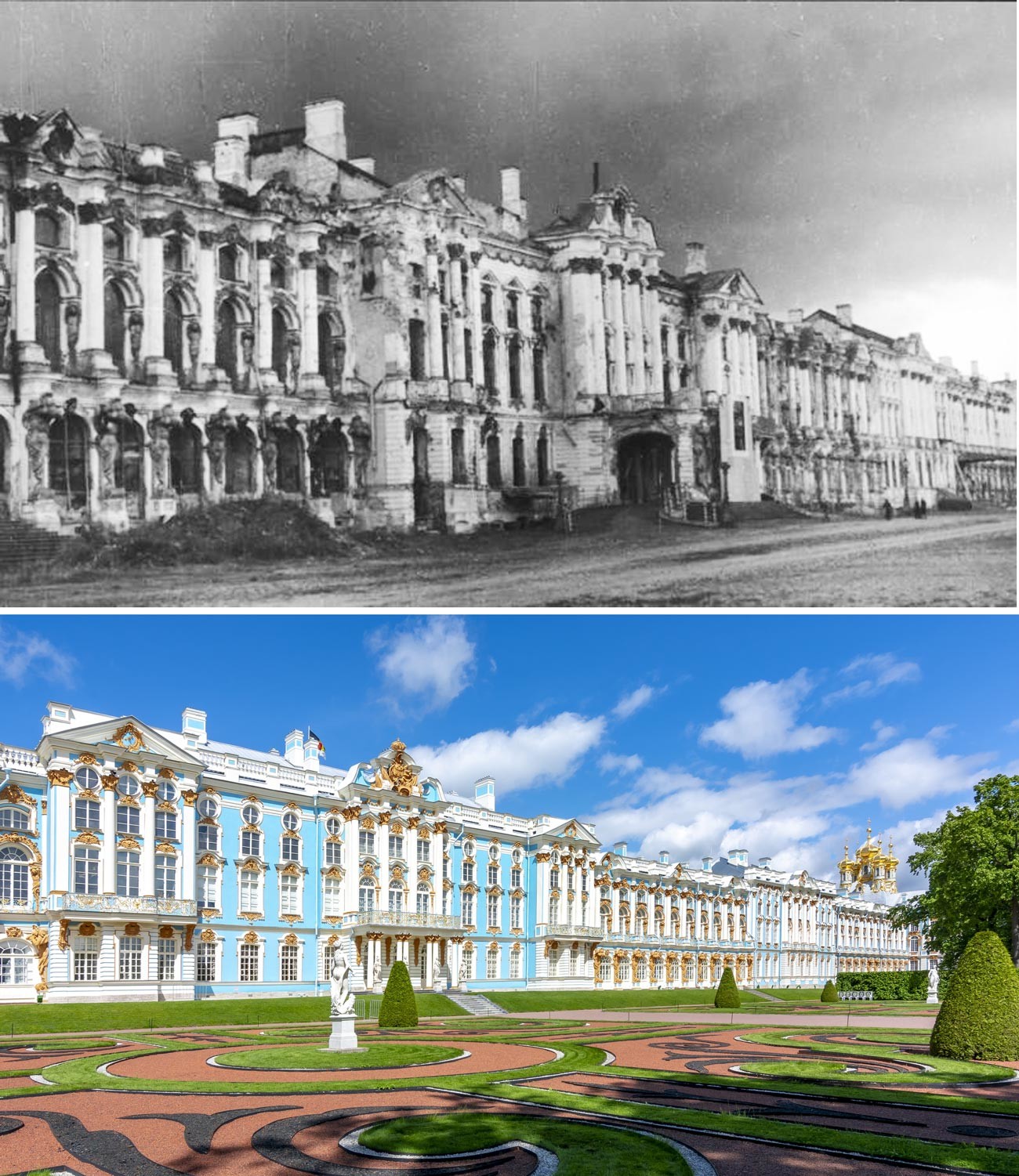
The Catherine Palace
Ivan Shagin/MAMM/MDF/russiainphoto.ru; Legion mediaIn September, the Germans occupied Tsarskoe Selo. The Catherine Palace was badly damaged and became a target for shelling. The Germans used its ground floor as a garage. They disfigured art objects remaining in the palace and looted part of its unique collection.
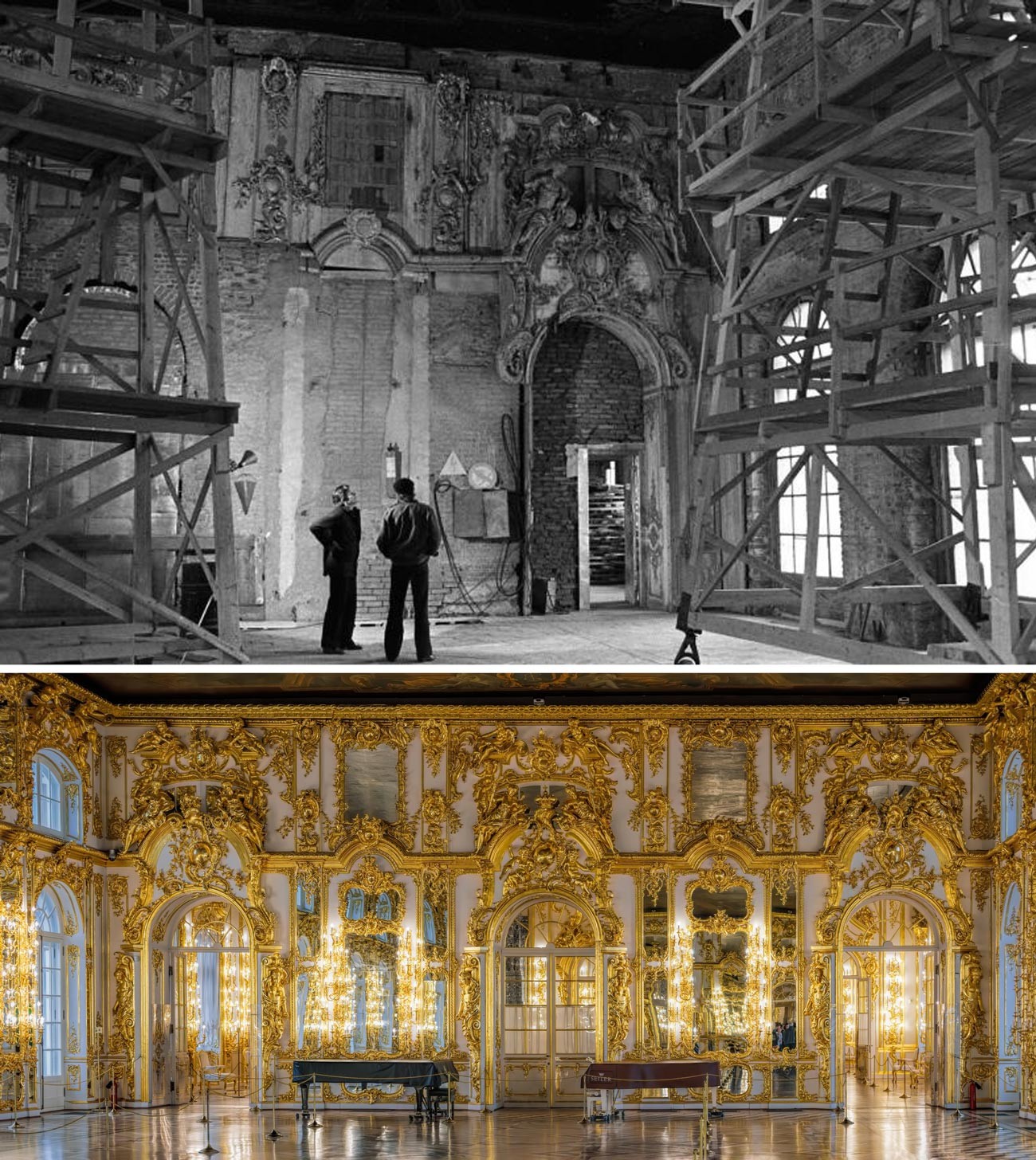
The Great Hall of the Catherine Palace
Vsevolod Tarasevich/MAMM/MDF/russiainphoto.ru; Legion Media
The Great Hall of the Catherine Palace
Nikolai Baranov/Lenizdat, 1948; Legion media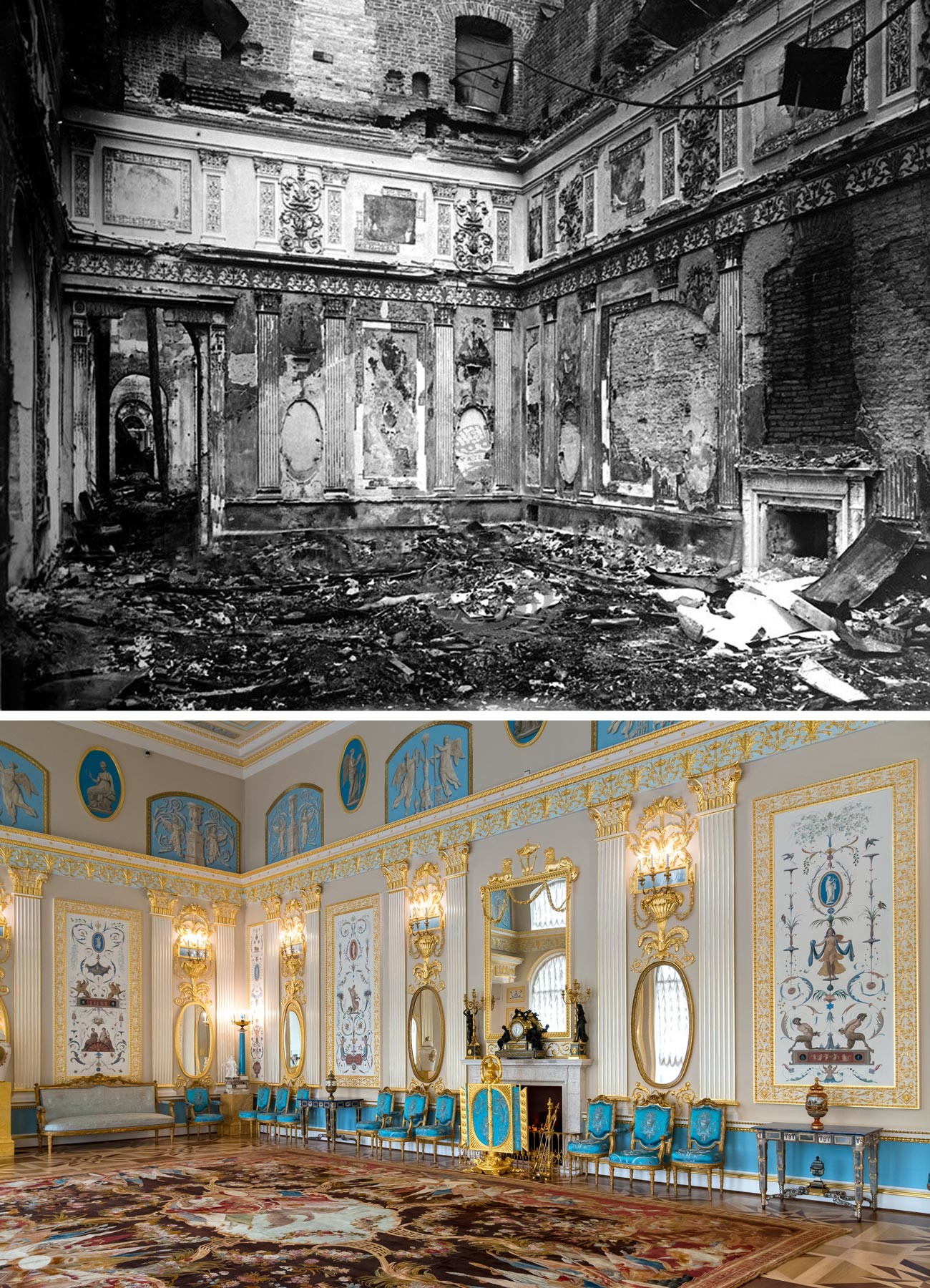
The Arabesque Hall
Archive photo; Legion media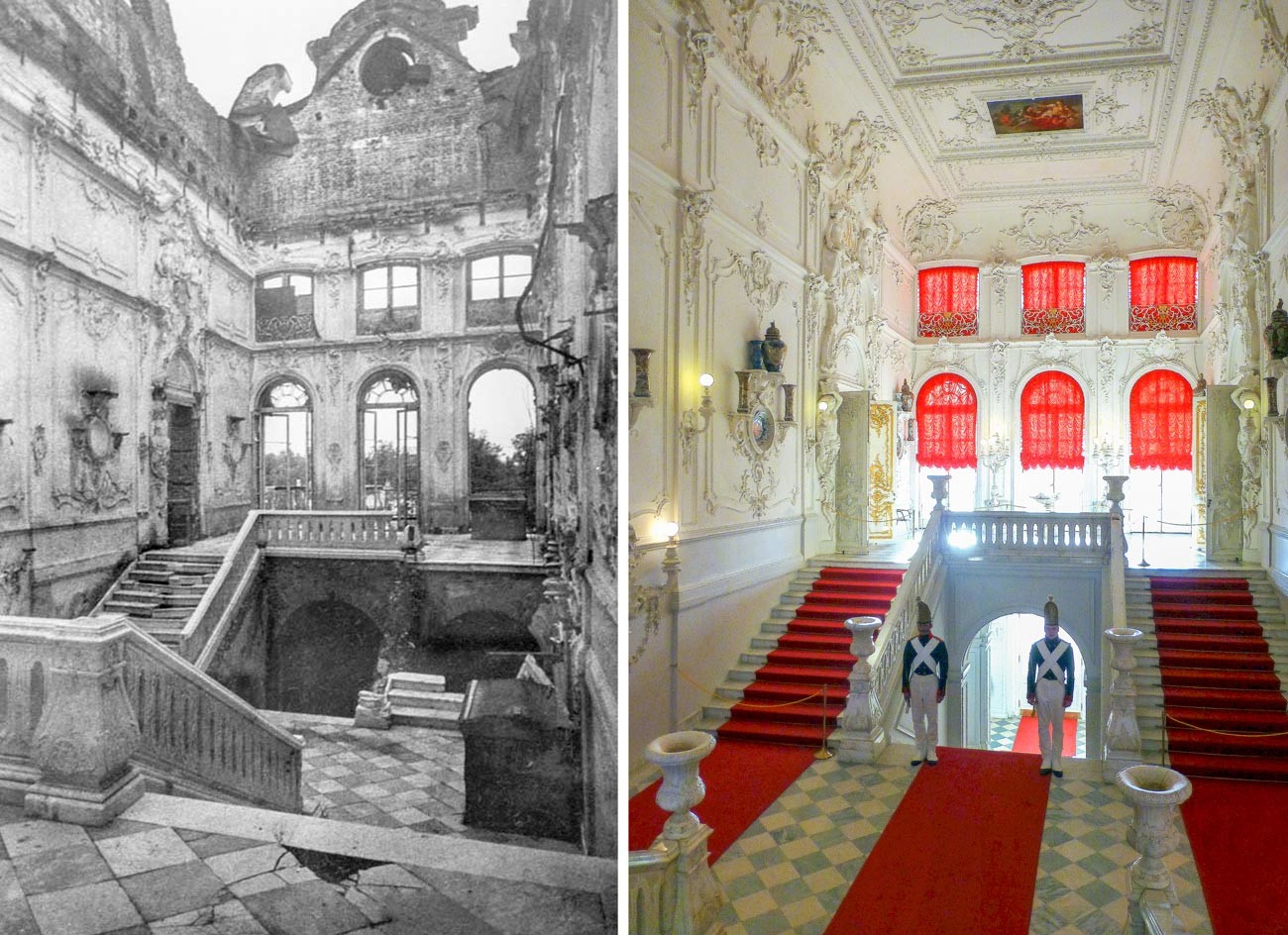
The Main Staircase
Archive photo; Edgar El (CC BY 3.0)One of the biggest cultural losses of World War II was the original Amber Room in the Catherine Palace, which disappeared without a trace. In the 2000s, small fragments of it were returned to Russia, but the main part had to be recreated from scratch. This work was completed in 2003.
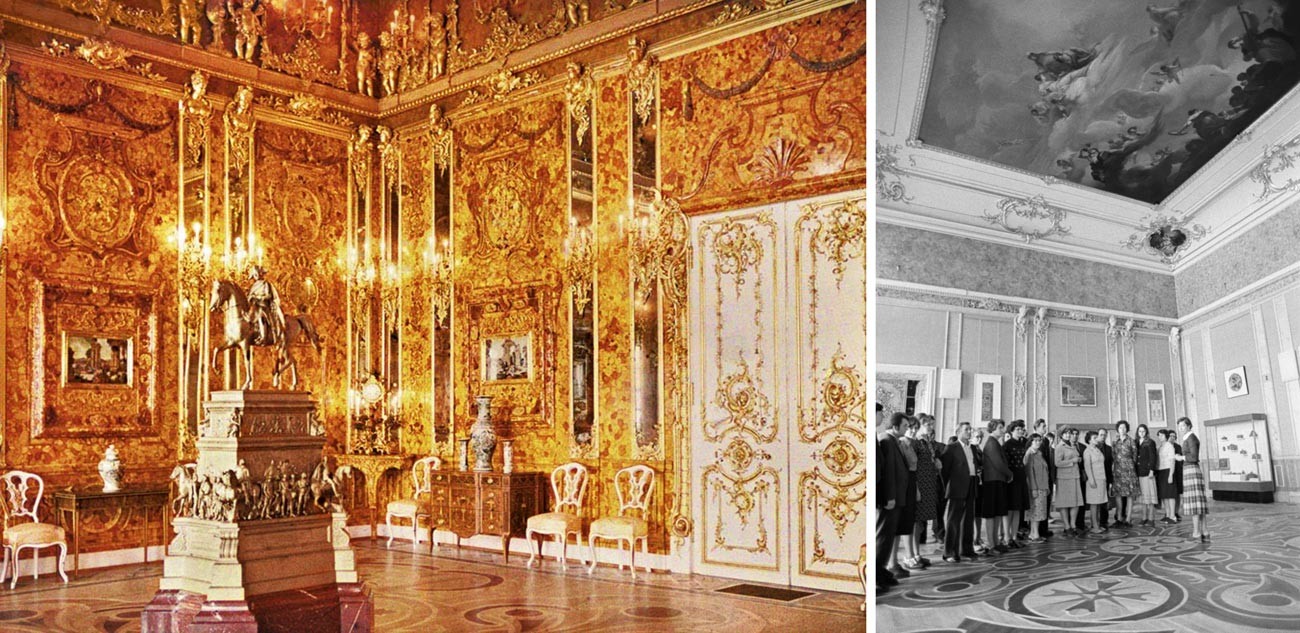
The Amber Room – before the War and in the 1980s
Andrei Zeest; Nikolai Naumenkov/TASSSome of the halls of the Catherine Palace were first reopened to visitors in 1959, but the restoration of Tsarskoe Selo continues to this day.

The grounds in front of the Alexander Palace in Tsarskoe Selo were used by the Germans as a cemetery
Vsevolod Tarasevich/MAMM/MDF/russiainphoto.ru; Legion media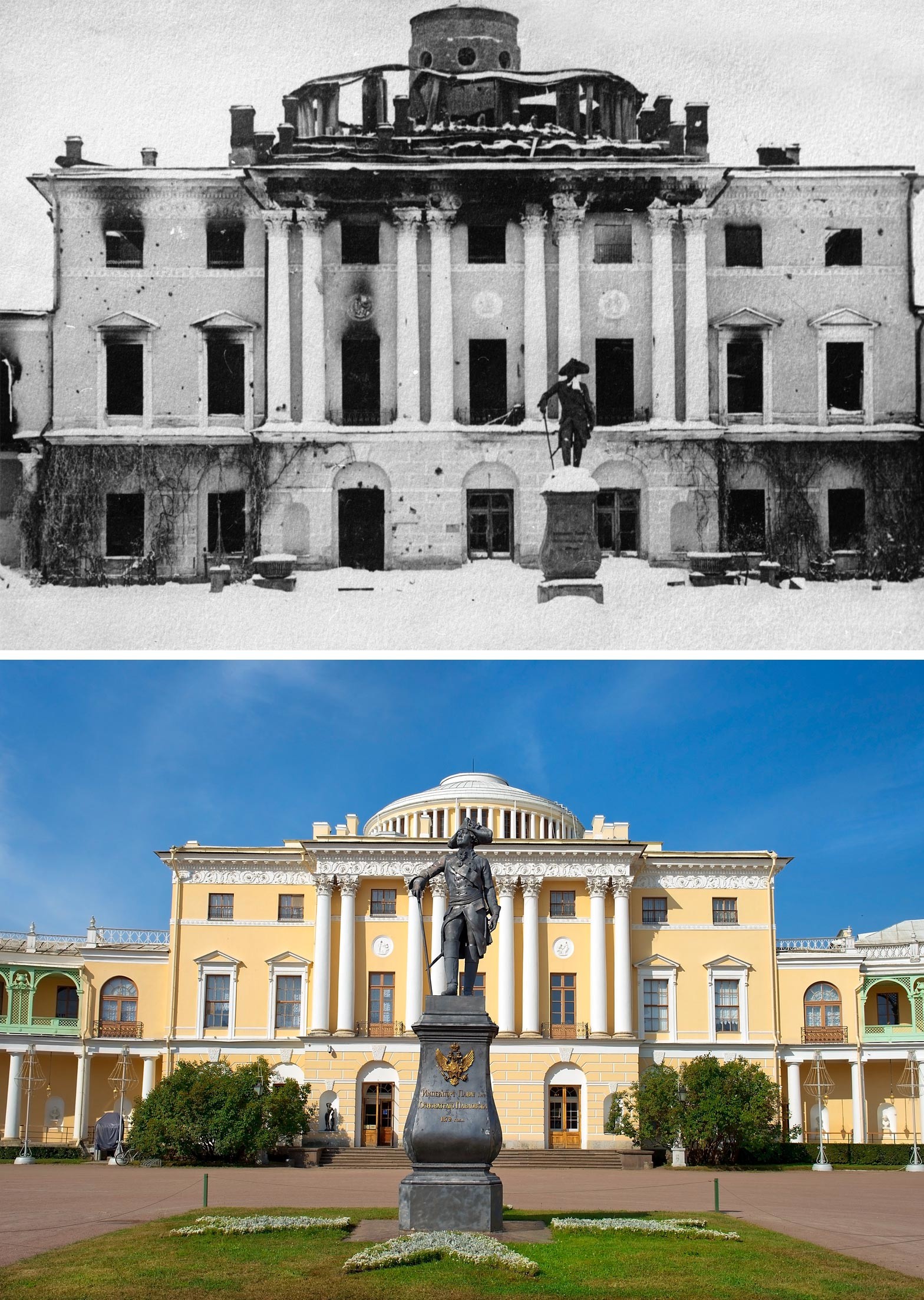
The Pavlovsk Palace in 1944 and now
Vsevolod Tarasevich/Sputnik; Legion MediaPavlovsk was built in the late 18th century as a summer residence for Emperor Paul I. It is located not far from Tsarskoe Selo and also was captured by the Germans. The beautiful English garden and Paul I's palace were badly damaged: when retreating the Germans set the palace on fire.

The Pavlovsk Palace in 1944 and now
N.Bobrov/Sputnik; Legion mediaThe museum owes a lot to its truly heroic director, Anna Zelenova. At the age of 28, she was not only the driving force behind the evacuation and preservation of treasures from the museum collection, but she remained at the museum, saving its exhibits, up to the very last moment and left just one day before Pavlovsk was captured by the Germans. She had to return to Leningrad, which is about 30 km away, on foot.
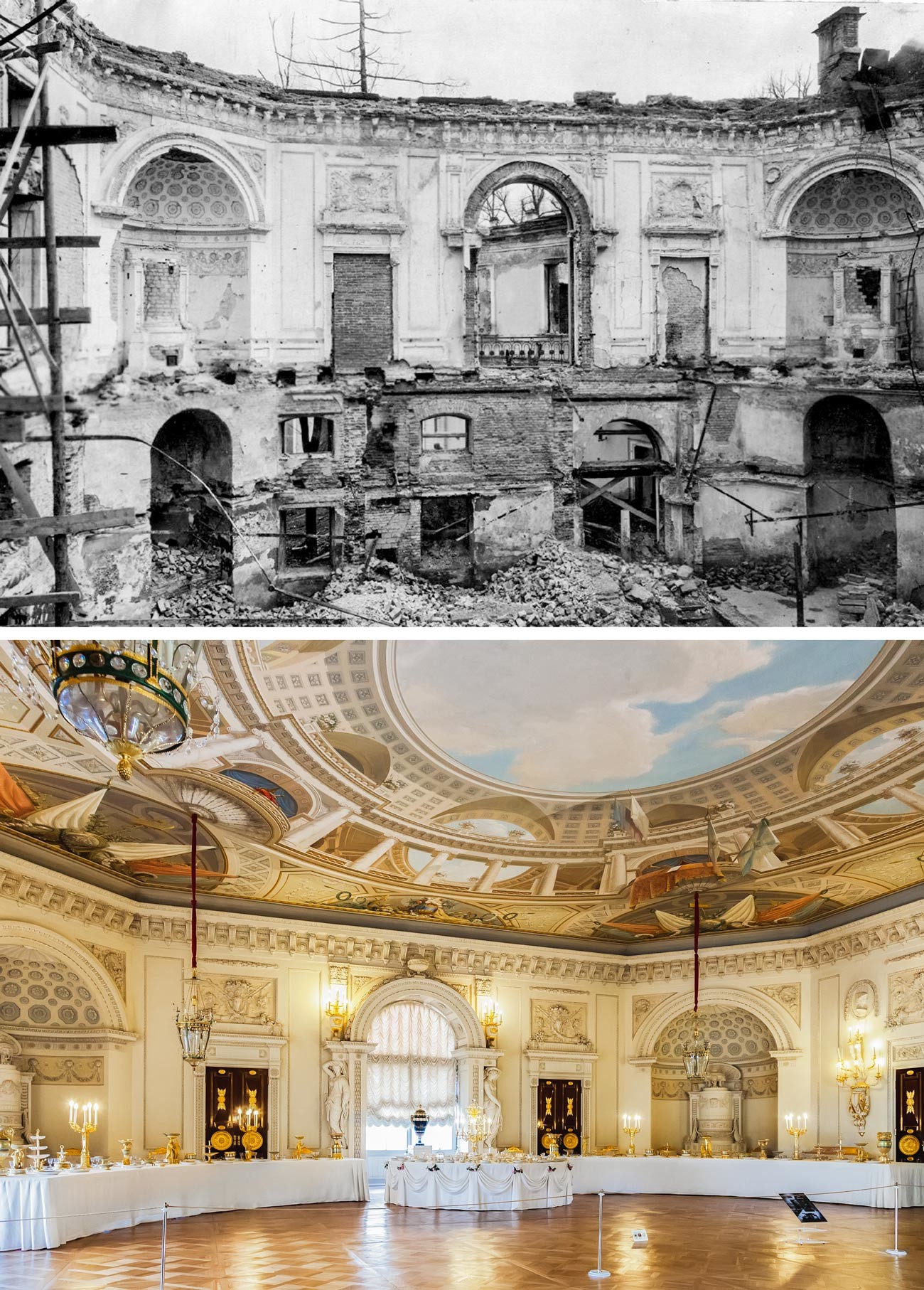
The Throne Room
Pavlovsk State Museum-Reserve; Legion MediaZelenova returned to the ruins of Pavlovsk just a week after it was liberated. While the city authorities did not believe that a palace that was practically completely destroyed could be restored, she immediately got down to work.
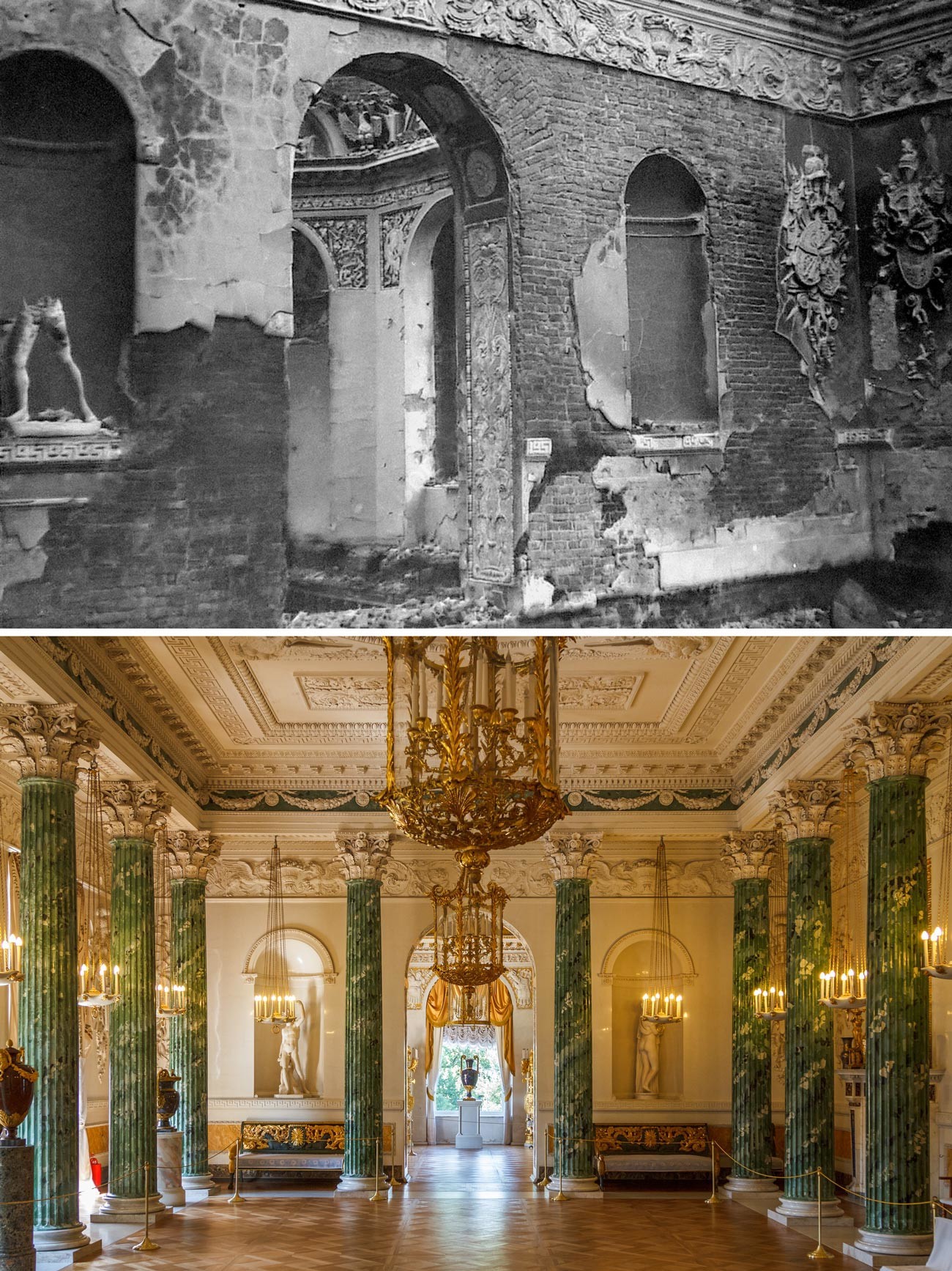
The Greek Hall
Central State Archives of St. Petersburg; Legion media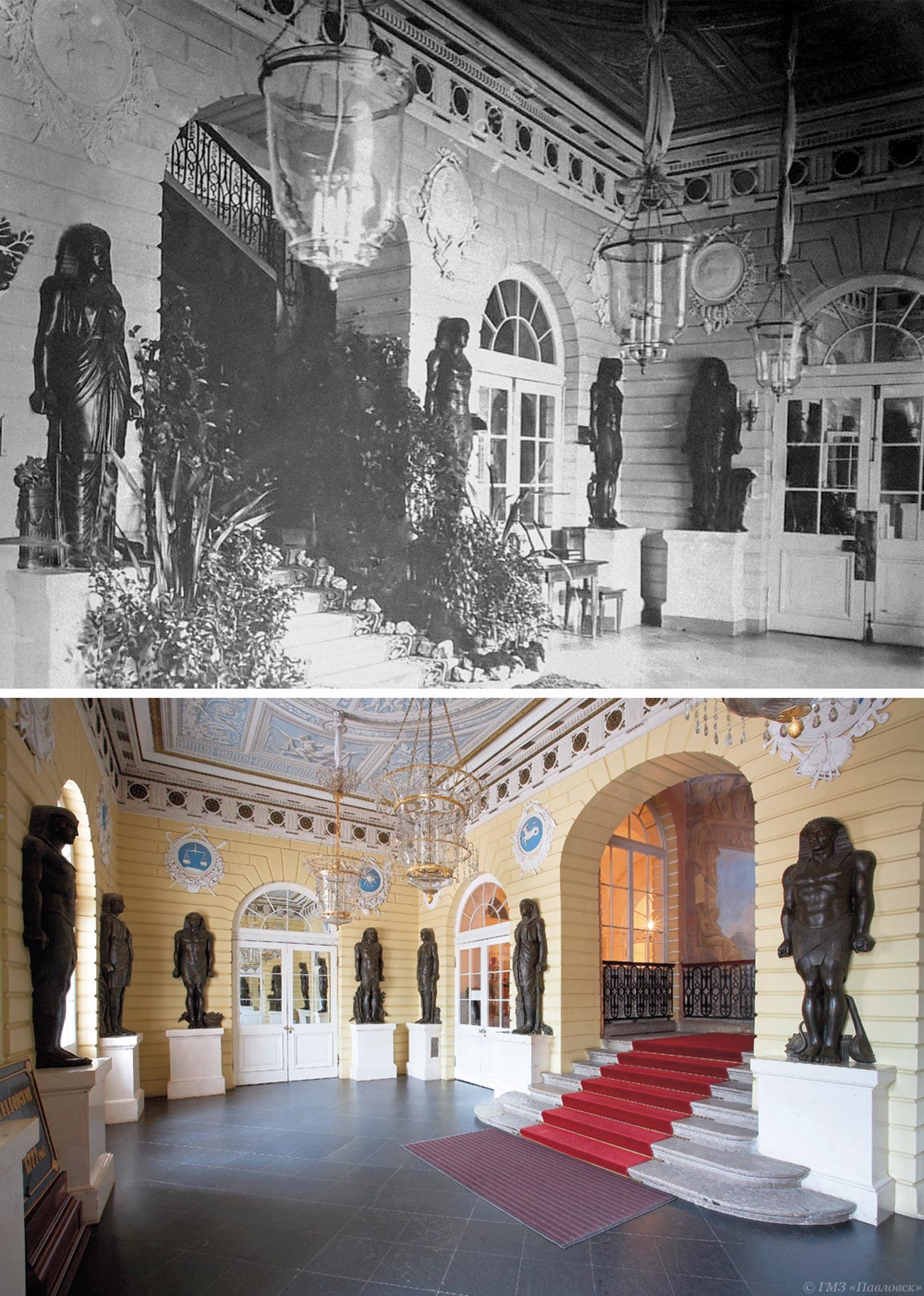
The Egyptian Vestibule
Central State Archives of St. Petersburg; Pavlovsk State Museum-ReserveAs a result, Pavlovsk became the first royal estate outside St. Petersburg to be fully restored, in 1977.
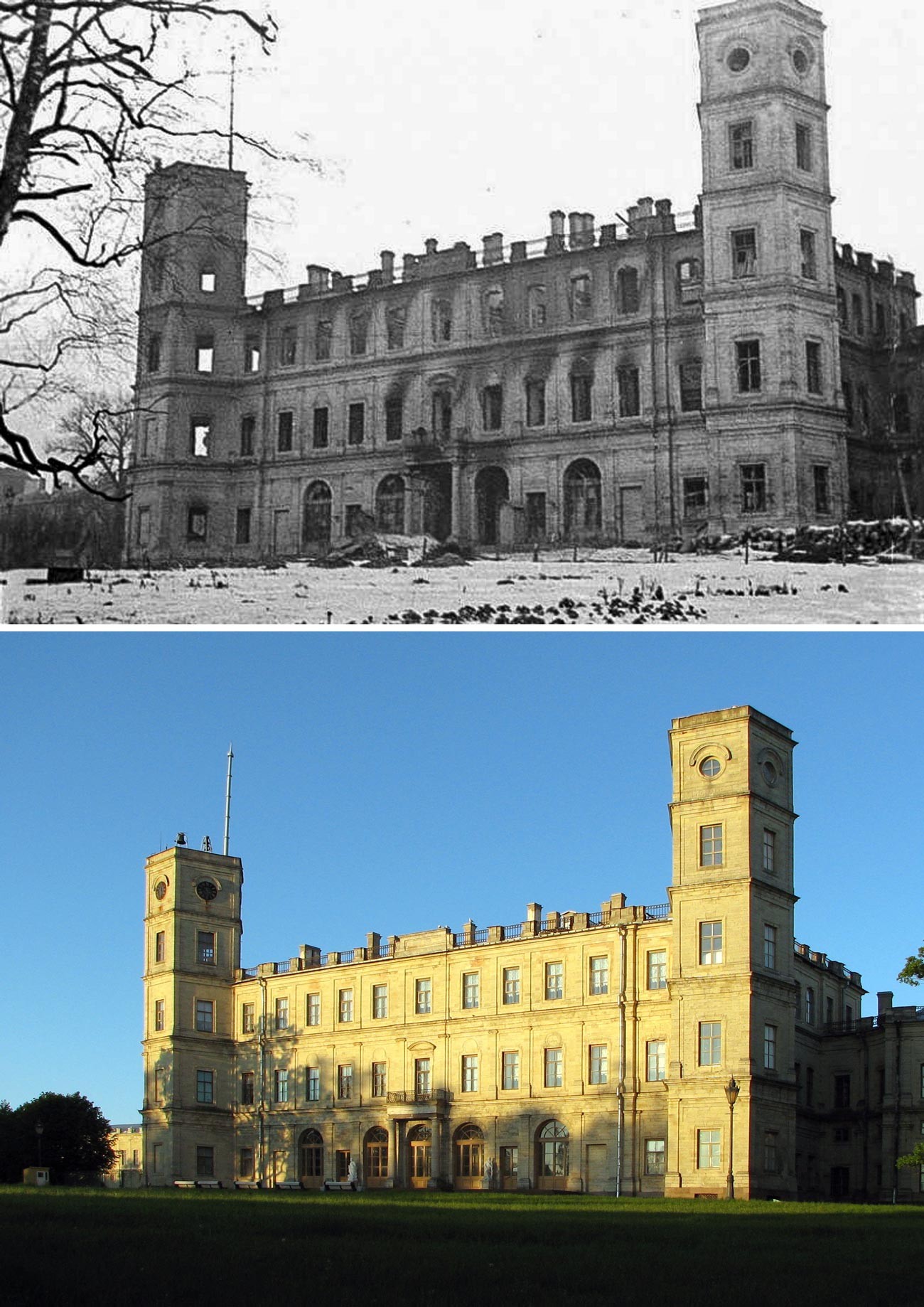
The northern façade of the palace in 1944 and now
Russian State Film and Photo Archive; Artyom Topchiy(CC BY-SA 3.0)This residence to the south of St. Petersburg was built in the mid-18th century for Catherine the Great's favorite, Grigory Orlov. After his death, the empress bought the estate and gave it to her son Paul I as a present. The palace had always looked rather grim and after having been in German hands, it left a truly terrifying impression.
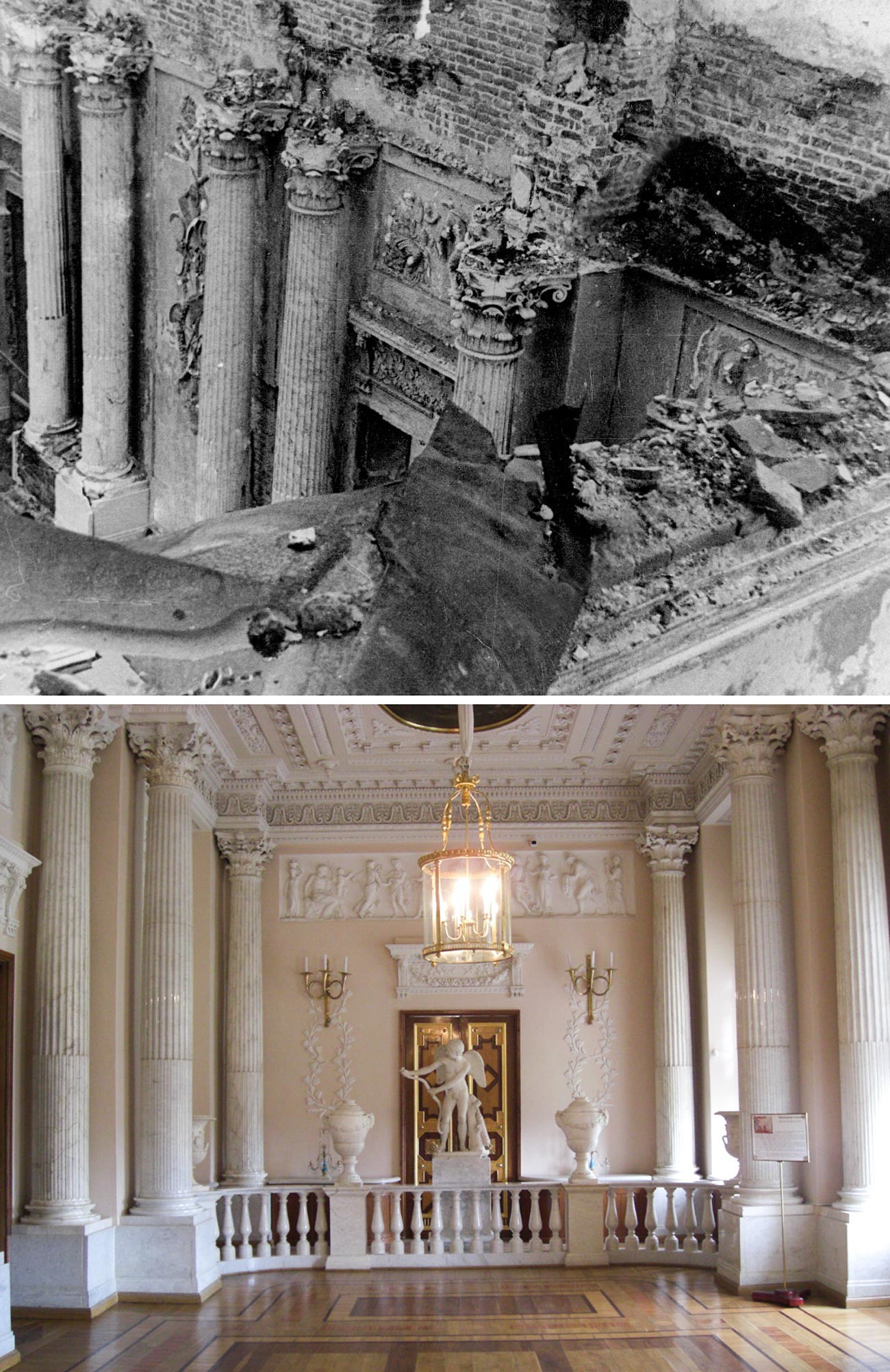
The Marble Dining Room
Central State Archives of St. Petersburg; Serko (CC BY-SA 3.0)The Soviet authorities decided that restoring the huge Gatchina estate would be too expensive, and so they divided its collection between other museums. Basic repairs were done inside the palace, restoring the stairs and flooring and covering all the damaged bas-reliefs and stucco molding with shields.
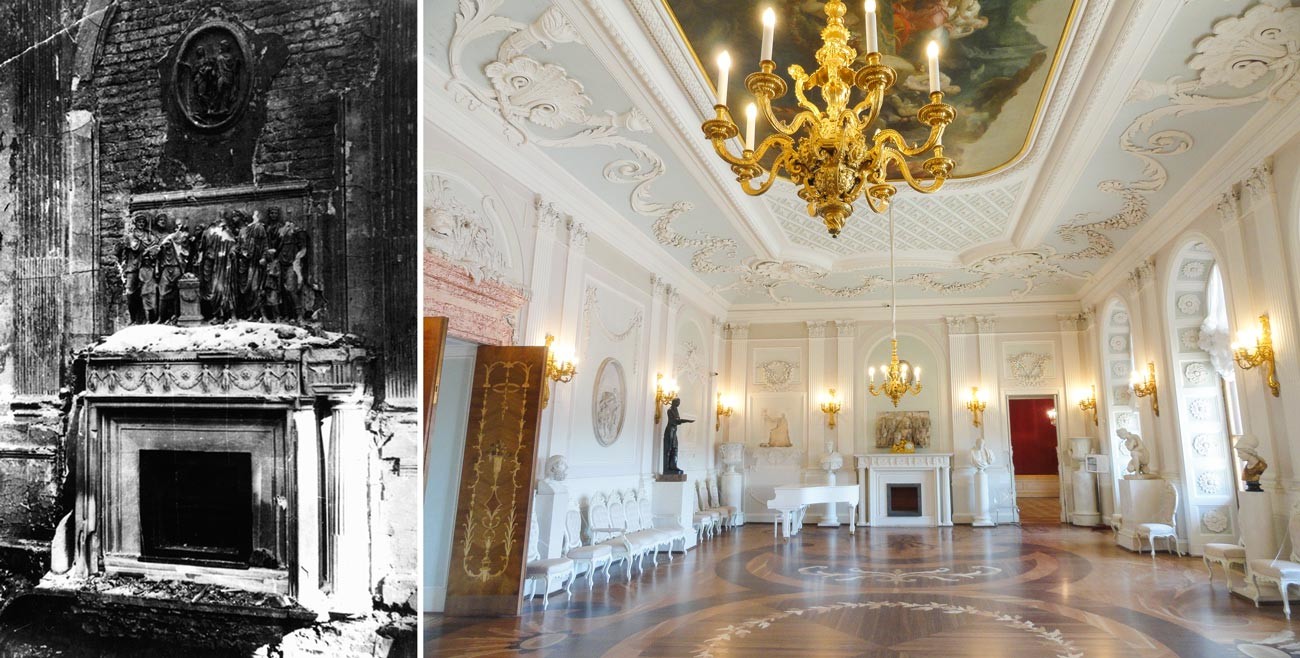
The mantelpiece in the White Hall
Gatchina State Museum-Reserve; Damien (CC BY-SA 2.0)The palace first housed a military school and then a research institute. It was almost decided to remove it from the list of historical and cultural heritage sites, but in 1976 museum curator Adelaida Yelkina managed to have the building vacated to house a museum there, and restoration work began. Ten years later, its first halls were restored to their original late 18th century appearance.
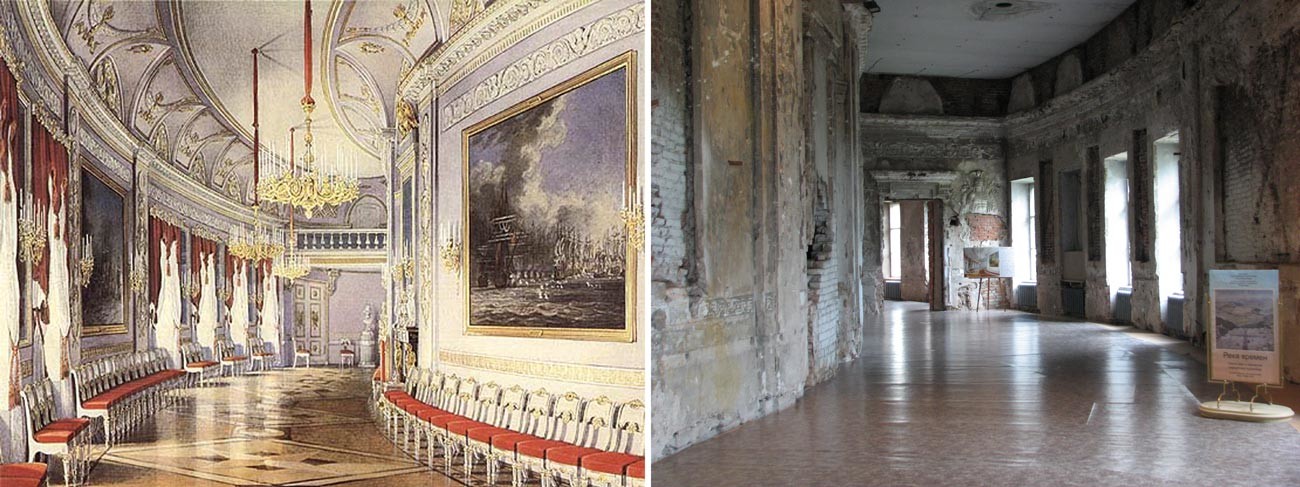
The Chesma Gallery in 1877 and in 2008
Eduard Hau; Steven Pavlov (CC BY-SA 4.0)It was decided that the gallery would not be fully restored, and instead it would contain a memorial hall capturing what it looked like after the Germans had left. The picture was taken in 2019.
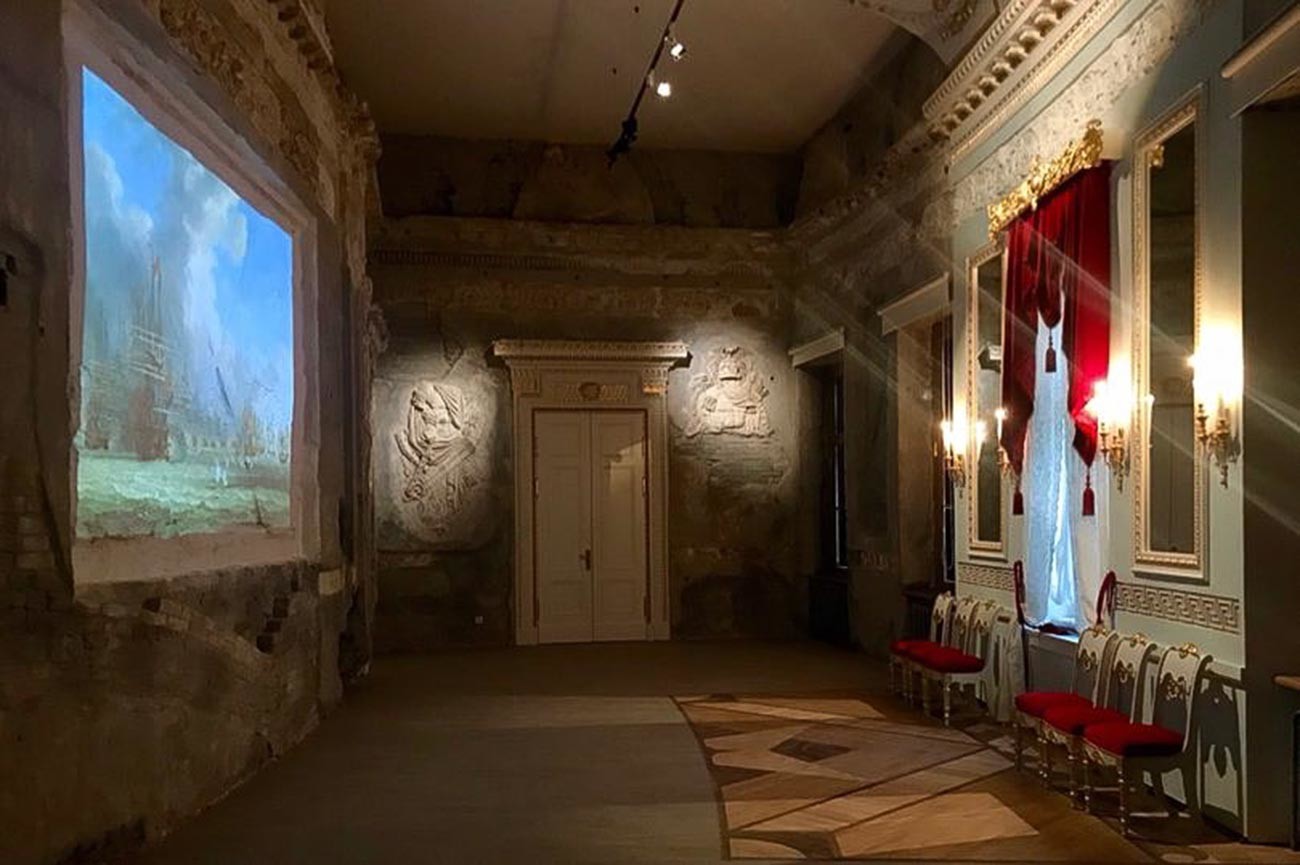
The Chesma Gallery, 2019
Committee for State Control, Utilization and Protection of Historical and Cultural Landmarks of St. PetersburgThe restoration work, however, progresses very slowly and is still ongoing: even in the main palace not all the interiors have yet been restored.
If using any of Russia Beyond's content, partly or in full, always provide an active hyperlink to the original material.
Subscribe
to our newsletter!
Get the week's best stories straight to your inbox